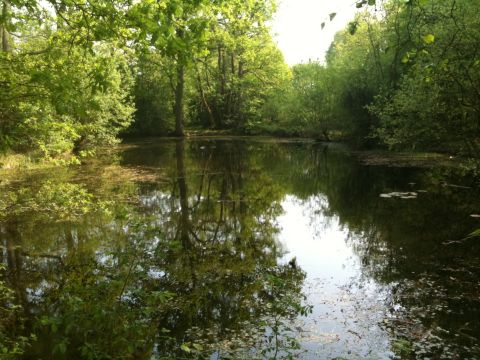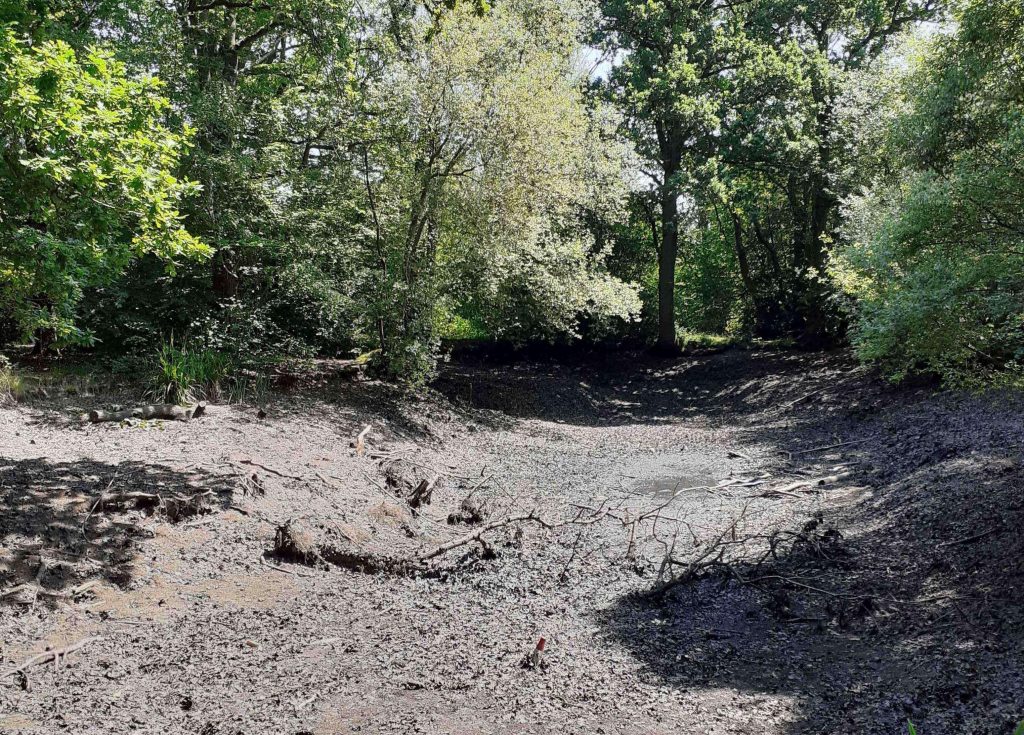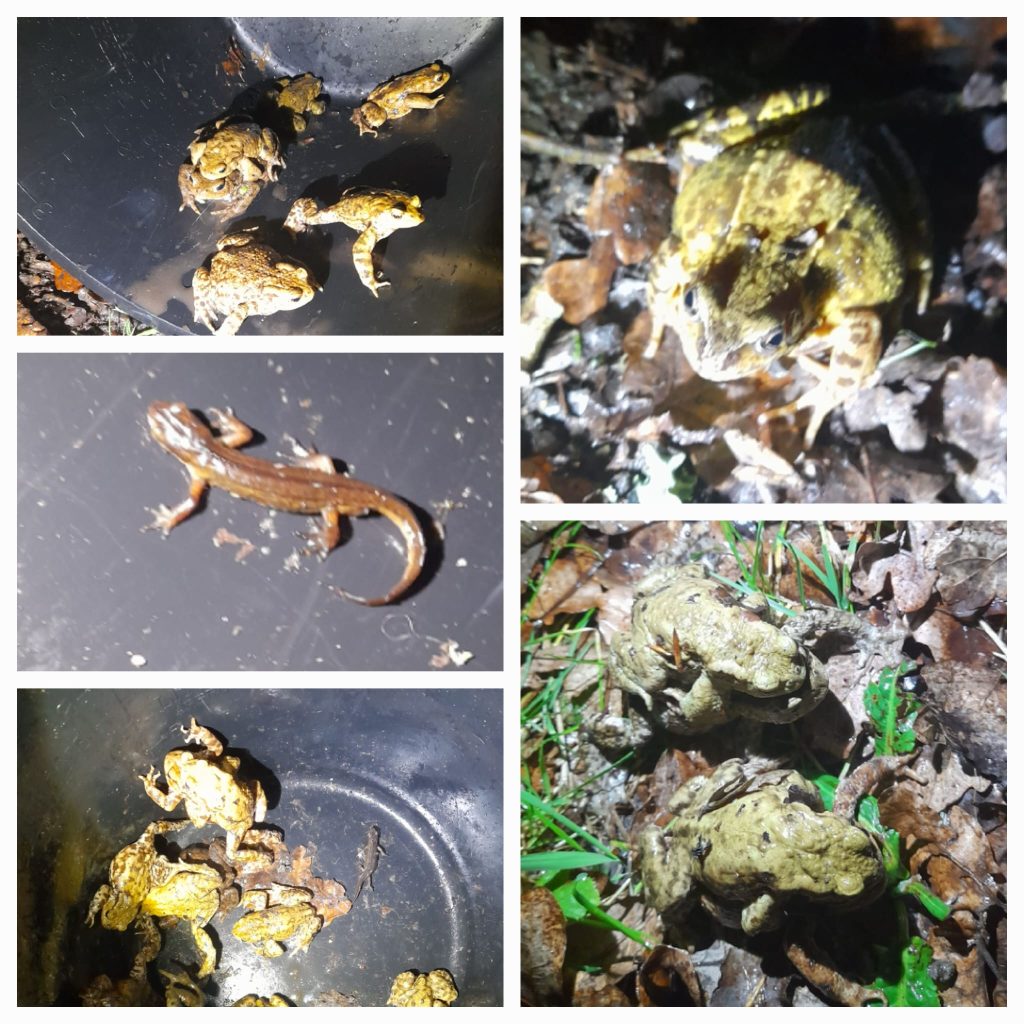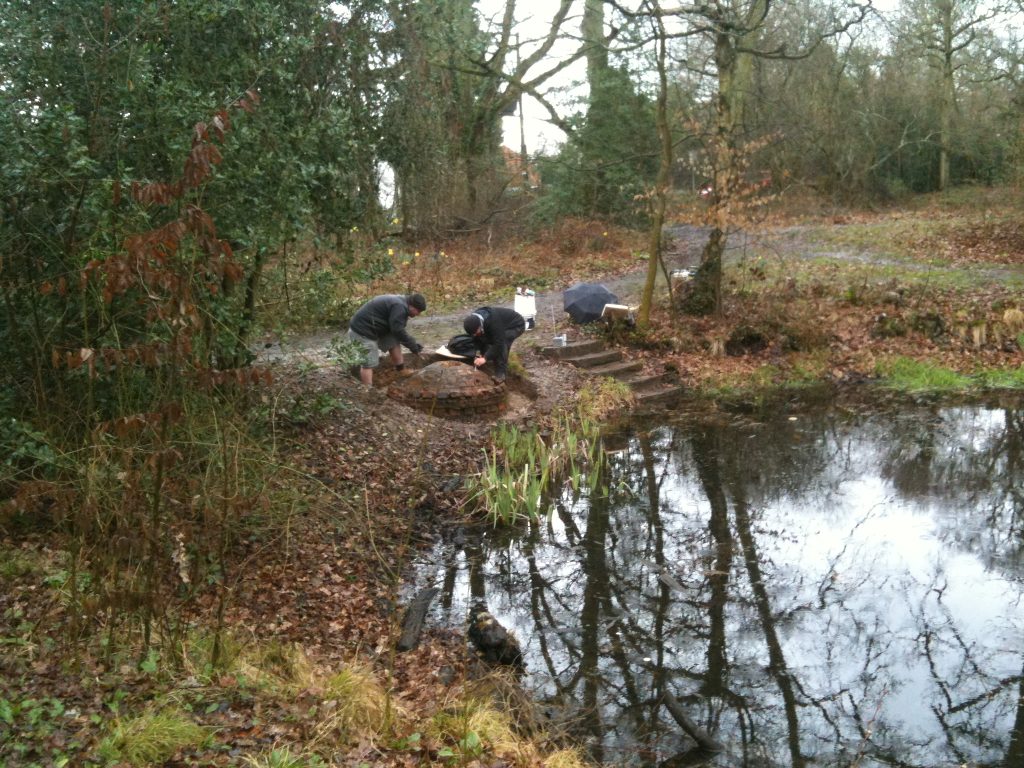Thank you for helping us raise the funds needed to restore the Lower Greenmoor Pond so that it can continue to be a vital resource for wildlife.
Contractors started on 23 June 2025 – the work is expected to take 3 or 4 weeks.

Why we fundraised
The Lower Greenmoor Pond in Woodcote has sustained life for over two thousand years but in just six weeks between May and June 2023, the Lower Pond lost all its water.

The Greenmoor Ponds site is the only natural greenspace owned by Woodcote Parish Council and the ponds are a much-loved community asset. The site is popular with walkers, as a place to visit on circular walks around the village or as part of longer walks in the surrounding beech woodland.
Parents bring their children to the ponds to explore the natural surroundings. Both local schools, Woodcote Primary School and Langtree Secondary School, have regularly used the site for pond dipping, amphibian identification, bird watching and general environmental education.
What happened?
Since December 2023, using a network of boreholes, we’ve been monitoring the groundwater. The data shows that the pond’s natural clay lining has likely been damaged, causing water that would normally stay in the sandy layers beneath the pond to drain through the clay into the chalk below. The water has eventually ended up in the chalk groundwater table about 120 metres below the pond.
After wet weather, the pond partially refilled last winter, but it was completely dry again last summer, and it has partially refilled again following this winter’s rain. The good news is that we know the groundwater outside the area affected by the damaged pond is healthy, giving us confidence that the Lower Pond will refill naturally if the damage is repaired.
How the pond will be restored
The work will involve clearing out the silt that’s built up over the years. Then, we’ll add new clay to re-line the bottom, sealing it again so the pond can hold water and continue to be an important local habitat for aquatic life.
Why this matters – for wildlife
As the Chiltern hills are a dry landscape, without springs or flowing water, the two Greenmoor Ponds have been vitally important for wildlife for centuries. Every year toads, frogs, smooth newts and palmate newts migrate and the large numbers involved make the ponds an important breeding site. On mild, damp evenings, a team of dedicated volunteers run a ‘toad patrol’ to reduce road casualties.

The ponds are a key resource for other species too. Last summer we carried out a series of bat monitoring sessions around the Greemoor Ponds which have built up a detailed picture of local bat activity. There are 17 species of bat in England, of which we have nine – the common and soprano pipistrelle, natterer’s and Daubenton’s (myotis species), brown long eared, noctule, serotine, barbastelle and the rare nathusius pipistrelle.
Why this matters – for people
The settlement of Woodcote only exists because of the complex local geology. In some areas of the Chiltern plateau, there are pockets of Lambeth Group clay and sands that locally cap the chalk hills. This shallow geology is important because it can yield and retain water at the surface, something that is necessary to maintain viable settlements before mains water was available. If you compare British Geological Survey maps and Ordnance Survey maps you will see this echoed across the Chilterns and Woodcote is a perfect example of this correlation.
The name Greenmoor is derived from Greenmere, Saxon for pond or pool. Written records from 1109 in the reign of King Henry I declare the ponds as being in the possession of Eynsham Abbey, but an expert from English Heritage told us in 2005 that the ponds could date from AD350 or earlier when they would have provided water for the occupants of a nearby Romano-British enclosure in Friarhampstead Wood. English Heritage also believed that the ponds may well have held some religious significance, due to their position at such a height in the Chilterns and so far from any running watercourse.
A resource essential for everyone, the Greenmoor Ponds are registered common land. Historically, the Upper Pond was used by livestock and the Lower Pond for domestic use. The ponds are shown on a map of 1818 and identified as a ‘public watering place’.
A flight of 21 steps into the Lower Pond made it accessible during fluctuating water levels and the ‘dipping well’ was constructed in 1889 following advice from the Inspector of Nuisances of the Sanitary Committee of the Rural District Council in an attempt to filter water to make it more potable.

The ‘dipping well’ is a basic filtration system that involves gravel at the bottom of the cylindrical brick walled hole into which buckets were lowered by hand to bring up the water.
The Lower Pond continued to be an important water source for the community until mains water was installed in Woodcote in the mid-1920s.
The cost
Following a tender process, the cost of restoring the pond will be £45,000. It’s a lot of money, but we’re delighted to tell you that we’ve raised the necessary funds.
Woodcote Parish Council, which is leading this project, were thrilled to be awarded a grant of £25,000 from the Trust for Oxfordshire’s Environment and the Landfill Communities Fund, and the Parish Council have pledged £10,000 themselves. Woodcote Conservation Group has crowdfunded for the balance and, thanks to the generosity of our kind supporters and the British Airways Climate Fund, we reached our target.
